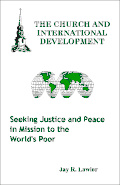These excerpts are protected by all U.S. and inernational copyright laws.
Copyright © 1999, by Jay R. Lawlor
Universal Publishers (uPUBLISH.com)
USA - 1999
- Christian Responsibility
- Will you strive for justice and peace among all people, and respect the dignity of every human being?
- I will, with God's help.
- From the Baptismal Covenant
- The Book of Common Prayer




